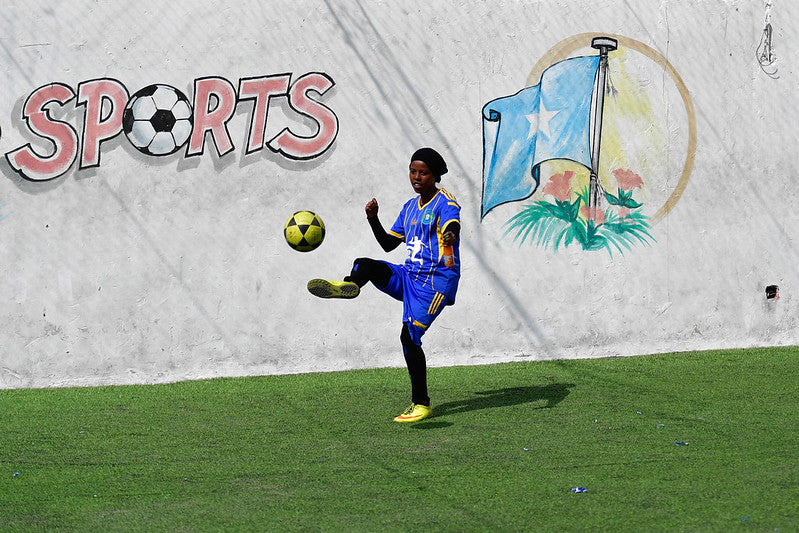There is one critical tip that must happen to be successful at juggling. That is practice juggling. That may seem harsh and very straightforward, but the best way to master a skill is to focus on that skill until it becomes second nature.
Juggling is an essential training element that we often overlook. Juggling allows the players to use all parts of their bodies to gain a feel for the ball. These touches build confidence and make players aware of parts of their body used to control or pass the ball. With a larger range of comfort with the ball, this often sparks imagination in the game. A good juggler does not guarantee the player will be a good game player, as there is no substitute for match play. Juggling should become a daily routine that only takes a few minutes a day. Coaches should encourage players to develop proper juggling techniques. When juggling, coaches should stress the following points:
- Use all parts of the body (head, chest, thighs, and feet) and use both feet. Don’t get caught only juggling with your dominant foot!
- Focus on good controlled touch to realize the full potential of juggling. If a player does not have enough body control, this will lead to bad touches.
- Be able to control the ball in different situations. So if a player has a bad touch, they should try to recover it rather than starting over.
- Be able to maintain a good body position.
- Find rhythm and harmony between the player and the ball.
- Practice while standing still, then progress to walking slowly and then with some pressure by either time or opponents.
- Practice juggling about 20 minutes each day.
- Juggling Progression
- Start with one touch with your right foot and catch it. Repeat this 50 times until you are consistently knocking the ball to your hands. Repeat 50 touches with your left foot and catch it.
- Juggle twice on your right foot and catch it. Repeat this until you are consistently knocking the ball back to the same spot. Repeat with your left foot.
- Switch feet while juggling. Start juggling on your right foot and switch to your left foot, then catch it. Then start juggling on your left foot and switch it to your right foot, and catch it.
Perform the progression above with your thighs.
Keys to Proper Juggling Of A Soccer Ball
Once you have perfected the progression above, it is time to free juggle with your feet and thighs. Remember some of the keys to proper juggling:
- Toe curled up
- Locked ankle
- Put backspin on the ball
- Knees slightly bent
- Head slightly leaning over the ball
- Ready to react quickly
- Consistent touch on the ball
- Alternate feet and thighs
Benefits of Juggling a Soccer Ball
As we already mentioned, many players may think juggling is a useless skill that really doesn’t have much to do with soccer and is just used for showing off. While you aren’t going to see any players do 10 juggles on the field during a game that doesn’t mean that juggling is useless, far from it. Juggling a soccer ball has many benefits that can help your overall game. These include
Better Ball Control
Juggling is an easy and fast way to improve your overall ball control.
Improved First Touch
First touch is a vital part of the game, juggling will improve your control and awareness when it comes to first touches.
Improved Skill With Weaker Foot
Many beginners do everything with their stronger foot and leave the weaker foot for the occasional touch and some dribbling when needed at most. Juggling will greatly improve your touch, ball control, and confidence in your weaker foot so you can become an ambidextrous soccer player.
Increased confidence – The confidence boost you get from being a good juggler cannot be measured but it is very noticeable
Improved eye-foot coordination – Having good foot-eye coordination is essential to being a good soccer player, juggling is a great way to increase it.
Helps with receiving the ball in the air – Want to be a master ball receiver? Juggling is a great way to get you there.

